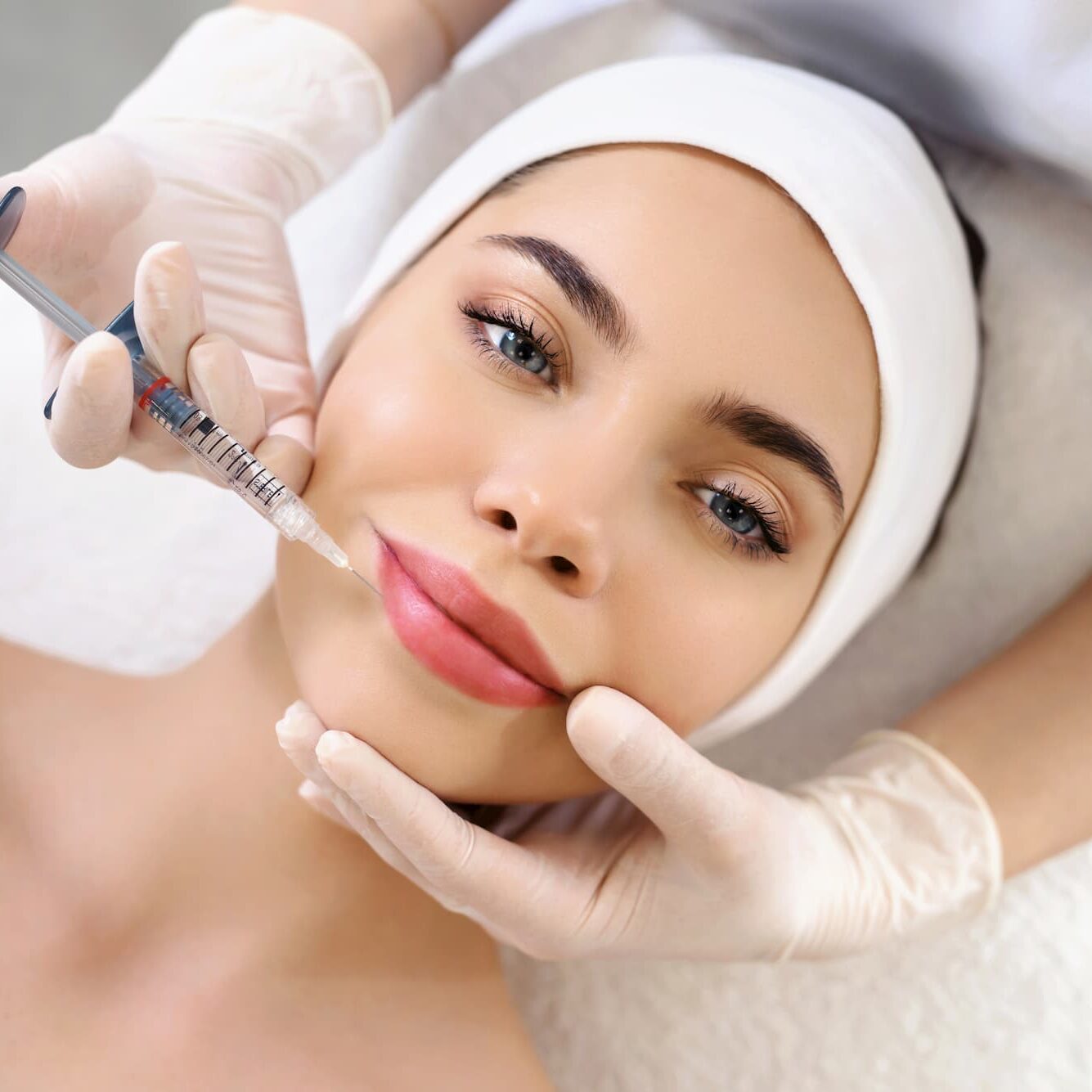Non-Surgical Facial Rejuvenation
Injectable treatments
Botulinum Toxins (such as Botox)
The skin on the face is closely attached to the underlying muscles of facial expression. As these muscles are forced to work harder as the skin stretches and the face droops, the lines become more apparent with age. Anti-wrinkle injections aim to weaken these muscles of facial expression and therefore reduce the lines. It is important not to completely paralyse these muscles and give a ‘frozen’ look. The commonest areas to be treatred include the forehead, glabella (area in-between the eyebrows), and crows-feet (the outer part of the eyes). Sometimes, I inject just below the brows to raise it and shape the brows. Anti-wrinkle injections can also be used in the neck to soften neck bands.
It is rare for there to be any bruising after the injections, but a small raised ‘pimple’ may be evident for a few hours after injection where the product has been deposited. It is important after treatment not to do anything that gives a rush of blood to the head for 72 hours after treatment as this can ‘wash away’ the product before it has had a chance to act. It can take a week for the full effect to become evident. It is also imperative that you do not rub around the eyes for fear of displacing the product into the eye muscles, for about a week or so.
Anti wrinkle injections typically last 4-6 months and occasionally may require a top up or adjustment after a couple of weeks or so.
Fillers
Face and lip fillers (dermal fillers) are substances injected into your face. They fill lines and wrinkles and add volume to areas such as your lips or cheeks. Fillers are not permanent. How long they last depends on things like the type of filler and where it's injected. They usually last between 6 and 18 months. Most dermal fillers used in the UK contain a natural substance called hyaluronic acid.
An anaesthetic cream might be used first to numb your skin. Injections are given around the area of your face being treated, which is then massaged. It might feel uncomfortable but should not be painful. The treatment usually takes between 20 and 30 minutes, depending on the area being treated.
The affected area may be a bit red, sore and swollen. Any swelling or bruising should settle down in a few days. You should be advised about what to do to help reduce the risk of side effects. This includes not wearing make-up immediately after the procedure and avoiding alcohol, coffee and the sun.
Complications include infection and bruising. If necessary, the effect of the filler can be reversed by the administration of a drug that dissolves the filler.

